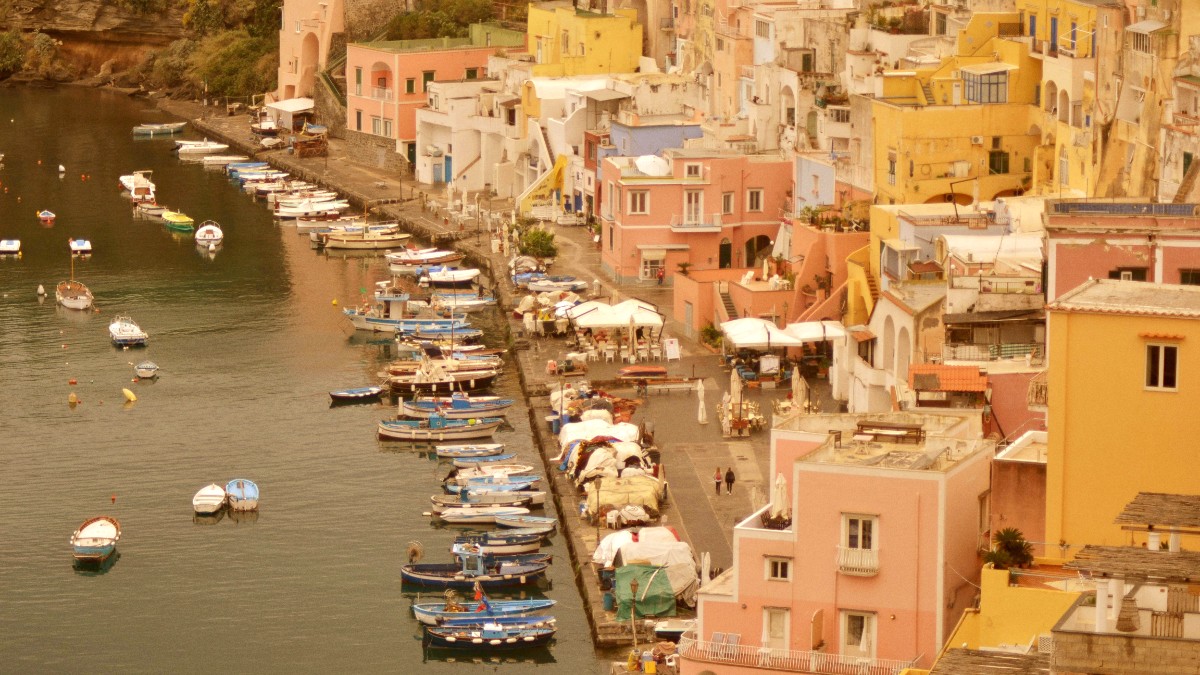
Campania, Italy
Visitors explore winding alleys, historic fortresses, and beaches that invite peaceful relaxation. The island’s small dimensions simplify exploration, fostering a sensation of familiarity and discovery at every turn. This guide contains all the knowledge for uncovering Procida's magic. It details everything from arrival to discovering its hidden corners, helping you map out a travel experience that captures the true spirit of this remarkable Italian island.
This guide is your companion, navigating the tranquil beauty and rich heritage of Procida. It maps out experiences for every explorer, from scenic walks to culinary delights.
Embrace the island's unique rhythm, where colors meet ancient traditions, creating an unforgettable escape. Prepare for a journey where every moment is a new discovery.
Procida is a volcanic island, a natural wonder shaped by ancient geological forces. It sits gracefully in the Bay of Naples, part of the Campania region of Italy. Among the three main islands in the bay – Ischia, Capri, and Procida – it is the smallest, measuring approximately 3.7 square kilometers (1.4 square miles). The island's coastline spans about 16 kilometers (9.9 miles), with numerous coves, hidden beaches, and striking viewpoints.
The island rests approximately 3.4 kilometers (2.1 miles) off the coast of Pozzuoli, a mainland town with its own Roman history and ferry connections. Naples, the bustling regional capital, is about 20 kilometers (12 miles) away. This closeness to the mainland makes Procida readily accessible, yet it keeps a distinct identity, shielded from the urban rush. A narrow bridge links Procida to the smaller, uninhabited island of Vivara. Vivara functions as a designated nature reserve, a sanctuary for flora and fauna. This natural bridge, accessible under specific conditions, presents an unique opportunity for nature lovers.
Procida's volcanic origins manifest in its dark sandy beaches and fertile soil.
The island's fertile soil nurtures lush vegetation and famous lemon groves.
The landscape features rolling hills and terraced vineyards.
Colorful architecture marks its coastal villages.
Views stretch across the Bay of Naples to Mount Vesuvius and the distant Sorrentine Peninsula.
Procida’s landscape reveals rolling hills, terraced vineyards, and the colorful architecture of its coastal villages. This geographical setting is a stunning backdrop for any visit, with views stretching across the Bay of Naples to Mount Vesuvius and the distant Sorrentine Peninsula.
The island's volcanic origins are evident in its dark sandy beaches and fertile soil, which nurtures lush vegetation and famous lemon groves. The coastline features numerous coves and striking viewpoints.
Its position in the Bay of Naples provides easy access from the mainland while maintaining its distinct identity, shielded from urban rush.
Procida's geographic features contribute significantly to its charm, offering both serene landscapes and convenient access.
Procida’s story starts with ancient Greek colonization, laying the foundation for its early settlements. Later, Roman settlers marked the island, integrating it into their vast empire. This early history established Procida as a place of interest and transit in the ancient world.
Throughout the centuries, Procida's exposed position made it a target for various invasions. Saracen raids posed a particular challenge, prompting islanders to develop fortified defenses. The most prominent example of this defensive architecture is Terra Murata, the island's oldest and highest settlement. This fortified village, with its thick walls and strategic location, offered refuge from maritime threats.
The island's oldest fortified village, built for protection against invaders.
Fishing and seafaring traditionally shaped the island's culture and economy.
Designated Italian Capital of Culture in 2022, a recognition of its unique identity.
In the 16th century, the D'Avalos family gained Procida as a feudal holding. The family built the Palazzo d'Avalos, a grand residence that underwent various transformations. In the 19th century, the Palazzo d'Avalos functioned as a royal palace. Later, it became a military school. Perhaps its most known chapter was its transformation into a high-security prison. This prison operated until 1988, leaving an interesting, if somber, mark on the island's heritage.
The island maintains a strong connection to its roots. It remains a working fishing village, not merely a tourist facade.
No large-scale luxury developments exist; independent B&Bs, family-run trattorias, and small local shops dominate.
Procida is a sanctuary of peace. Its quiet atmosphere contrasts sharply with larger, bustling destinations.
Procida invites relaxation and reflection, a welcome contrast to hurried sightseeing.
Visitors observe daily life unfolding, from fishermen to locals enjoying morning coffee, adding genuine charm.
Focus on local businesses ensures tourism supports the island's community directly.